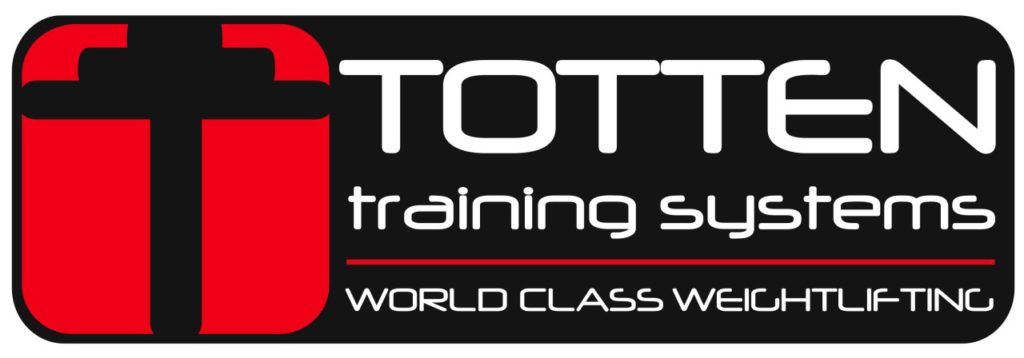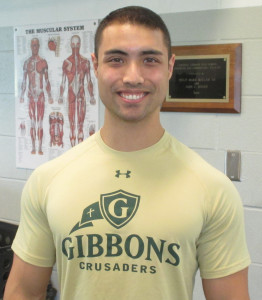The B.O.L.C (Basic Olympic Lifting Certification) by Coach Cowick
The completion of a professional certification is an indication of meeting certain requirements and standards. This can be confirmed through a series of learning, studying, verbal, written or visual tests. In the health and fitness industry, certifications may be awarded for knowledge in exercise programming, anatomy and physiology, health risks and diseases, basic functions of the human biology, or a general understanding of nutrition. In this blog I”m going to cover a new certification I found helpful called the Basic Olympic Lifting Certification that was developed by Vetran Coach Leo Totten.
Olympic lifting teaches an athlete how to apply large amounts of force, by effectively activating his/her muscle fibers more rapidly. This can be extremely important when trying to maintain lower body weight for athletic purposes, but still be able to apply tremendous force. Olympic lifting is paramount to athletic performance – it builds on strength, power, speed and metabolic development. It is typically developed through three progressive exercises (hang pulls, high pulls, and dead lifts) to begin the Power Clean, Clean Snatch and Clean and Jerk. There are few quality certifications out there that I will discuss. I will also cover why I believe in taking the Leo Totten Training Systems – Basic Olympic Lifting Certification compared to the United States of America-Weightlifting Level-1 Sports Performance Certification (USAW) and Crossfit Level 1 Certification (CF-1). (If you are unaware of Leo Totten and his credentials, they can be found on his website here: www.tottentraining.com)
The Leo Totten Training Systems- Basic Olympic Lifting Certification is a certification myself and the Director of Strength & Conditioning/Teacher from Cardinal Gibbons High School, Chris Morland, received approximately 2 weeks ago. It was an 8 hour course and it was directed by Luke Barthel, who is very knowledgeable. He has 10 years of college strength and conditioning experience from Ole Miss and Duke, certified through SCCC, USAW, BOLC/ AOLC- Totten Training Systems Instructor. This was an 8 hour course that was mainly all hands-on participation. The main exercises I understood were the progression exercises and power cleans – everything else was completely new to me. I learned a lot about how to progress to cleans, jerks, and snatches and how to deal with flexibility and strength issues which hold people back. We also utilized a video analysis app called “Coaches Eye,” a great app that captures the lifter doing the movement, analyzing bio-mechanics of the lifter, and slow motion capability. It was tremendously help to capture mistakes in my technique and form. See this example of me:
Example of Coaches Eye Video: https://www.coachseye.com/v/UUqR
But it was also great because I learned, tested, and coached the movements I was taught. I have a deeper understanding of the form and technique of the exercises, and I received it all in one day’s time for only $299. This is truly a basic course that will help anyone better understand the lifts and how to teach them. It doesn’t go so far in-depth to discuss the dynamics of programming, sport specific design, or long term development or accommodating tall/large athletes. These can be learned through the Advanced Olympic Lifting Course (AOLC). The price is a little more expensive and a little longer, $545 and a 2 day/ 16 hour course. It is great how Leo Totten broke up the learning process for this course between the BOLC and AOLC, unlike with the CF-1 and USAW. The USAW and CF-1 certifications are definitely more in-depth, but also more expensive and longer!
Unlike the BOLC, the USAW-Level 1 charges $445 (when not held at the Olympic Training Center in Colorado Springs, CO), for one weekend of 13-14 hours with 9 hours of practicum and 4-5 hours of lecture. The cost is $715 when it is actually held at the training facility. No prerequisites are required. Like the BOLC, it covers the progressions of the Snatch, Clean and Jerk, associated movements including the pulling progressions and squat variations. It covers the information involving programming of training and technical rules. USA-W is a great basic course and recognized by all in the fitness industry.
As for the CF-1, the cost is $1,000 for the course if registered 14 days or more prior to testing. This is a 2 day course of approximately 14-16 hours. It is almost the same amount of time as the USAW, but almost twice the cost. Participants receive a handbook to study prior to the certification, and a t-shirt upon attendance. There is a different approach in the CF-1 certification than the USAW and BOLC/AOLC. The CF-1 covers small group training and how to conduct a class with effective technique including high intensity effort to push the client to the next level. On the other hand BOLC is an introductory class for teaching the fundamentals of Olympic lifting. Generally, Crossfit is viewed by many of my colleagues, coaches, instructors and as a sport with no adequate tracking system to improve physically and lack of proper weightlifting technique at times. Crossfit sometime isn’t taken seriously because progress is not quantified due to the approach of using AMRAP (as many reps as possible). Can coaches and trainers consider Crossfit as a credible certification for Olympic Lifting without solid periodization strategies and proper technique?
PROS of BOLC
- Growth: Basic understanding and comprehension of Olympic Lifting and it’s usefulness in athletic development for all sports
- Affordability: allows the basics in learning and teaching the Olympic Lifting movements at an affordable price.
CONS of BOLC
- Knowledge: it covers the basic information on the exercises, but not on how to incorporate it into a program design.
- Acceptance: This is a new certification not well known to people so it may not be accepted by schools or other fitness establishments.
The Leo Totten Training Systems-Basic Olympic Lifting Certification is a great way to get started in learning the basics of Olympic Lifting and how to teach it. If you are unable to afford some of the other Olympic Lifting Certifications this is a great way to get some experience from an expert. Also, if you want to progress for skill, Totten Training Systems offers the AOLC to identify strengths and weakness in the Olympic Lifting movements and fully integrate them into your program. I would highly recommend this certification to those who what to learn and apply it for overall force and power development.
In the next blog coming out this weekend Coach Amer will discuss the USAW certification.
Did you like the ideas presented in this blog? If so, please add a comment below for Coach Cowick. Our team of bloggers would like to get your feedback. When you submit a comment our goal is to re-post it within 24 hours. Thanks!
Personal Trainer at Fitness Connection and Strength and Conditioning Coach at Cardinal Gibbons High School
“The views, opinions, and judgments expressed in this message are solely those of the authors and peer reviewers. The contents have been reviewed by a team of contributors but not approved by any other outside entity including the Roman Catholic Diocese of Raleigh.”



Nice summary of the BOLC! Let’s get more education going in the NC area! Thanks for the post.
Coach Totten, We are working on it with a Clinic MorlandSTRENGTH is doing January 2017 with the system. We will talk about the benefits of the system and events coming up! All the Best, Chris Morland